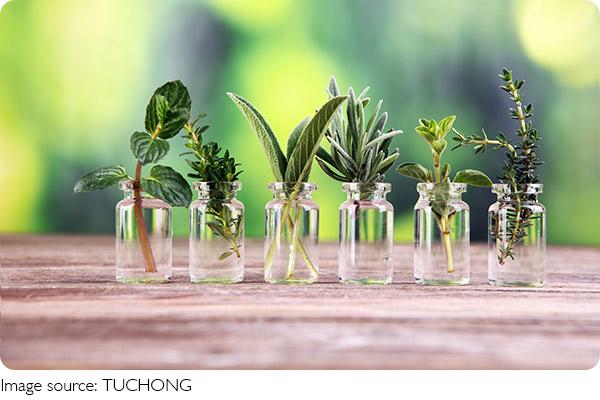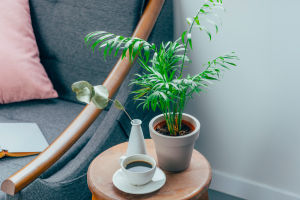Hydroponics 101

When Jamie, a graphic designer living in a downtown apartment with no balcony and barely any natural light, harvested her first homegrown lettuce using a countertop hydroponic system, she was shocked.
No soil, no backyard—just water, nutrients, and light. And it worked. Hydroponics isn't just for futuristic greenhouses or sci-fi farms anymore.
It's rapidly becoming a practical, sustainable solution for urban dwellers, renters, and anyone with limited space or poor soil.
Whether you're trying to reduce your grocery bill, eat cleaner, or simply enjoy the satisfaction of growing your own food, hydroponics offers a smart and surprisingly low-maintenance path.
What Is Hydroponics, Really?
At its core, hydroponics is the method of growing plants without soil. Instead, plant roots are supported in a water-based solution that's rich in nutrients. Depending on the system, the roots may be submerged directly in water, suspended in air and misted, or supported by inert materials like clay pebbles or coconut coir.
Why it works: Soil isn't the essential ingredient—nutrients and water are. In traditional gardening, plants expend energy digging through soil for what they need. In hydroponics, everything is delivered directly to the roots, making growth faster, cleaner, and more efficient.
Why It's Gaining Ground at Home
Hydroponics used to sound high-tech and out of reach, but that's changed fast—especially with the rise of compact home kits and plug-and-play systems. These days, even a windowsill can become a thriving salad.
Here's why more people are trying it:
1. Space Efficiency:
You can grow herbs, leafy greens, strawberries, and even small tomatoes vertically in a single corner. Great for apartments or basements.
2. Water Conservation:
Hydroponics typically uses up to 90% less water than soil gardening, since water is recirculated rather than drained away.
3. Faster Growth:
Because nutrients are so accessible, plants often grow 30–50% faster in hydroponic setups compared to soil.
4. Pest and Disease Control:
Fewer pests, less disease, and no weeding make the whole process more beginner-friendly.
Popular Systems You Can Use at Home
You don't need a science degree to get started. Here are three beginner-friendly systems that work well in small spaces:
1. Deep Water Culture (DWC)
Roots float in oxygenated water with nutrients. Ideal for leafy greens like lettuce and spinach. Maintenance is low, and results are fast.
2. Kratky Method
A passive, no-pump version of DWC. Plants sit in a lid over a container of water and nutrients. As the plant uses the water, the root grows longer into the container. It's simple and great for absolute beginners.
3. Tower Systems
Vertical hydroponic towers recirculate water through multiple growing pods—perfect for tight spaces. These are common in smart indoor gardens that come with built-in LED lighting.
What Can You Actually Grow?
While root crops (like carrots or potatoes) aren't ideal for hydroponics, many popular plants thrive:
• Lettuce & greens (romaine, arugula, kale)
• Herbs (basil, mint, cilantro, oregano)
• Chili peppers & small tomatoes
• Strawberries
• Houseplants like pothos and philodendrons, for decorative green walls
Start with fast-growing, low-maintenance varieties, then experiment as you gain confidence.

Sustainability Meets Smart Living
Hydroponics is not just about convenience. It also aligns with a growing awareness around sustainability, food security, and urban resilience. In areas with poor soil quality, frequent droughts, or limited agricultural land, hydroponics makes it possible to grow food locally, indoors, and year-round.
According to the National Agricultural Library, hydroponic systems can yield 4–10 times more produce per square foot than traditional farming. For city planners and eco-conscious households alike, that's a big deal.
And with the rise of smart sensors and AI-powered garden systems, it's becoming easier than ever to monitor pH, light levels, and nutrient balance through a smartphone.
What You'll Need to Get Started
Before jumping in, here are the essentials:
1. Grow lights – Unless you have bright, consistent sunlight, invest in full-spectrum LEDs.
2. Nutrient solution – A balanced liquid fertilizer with macro and micronutrients.
3. pH meter – Helps you keep water slightly acidic (ideal for most plants).
4. Growing containers – Could be a bucket, bin, or pre-built hydroponic kit.
Starter kits range from $50–$300, depending on size and tech level. DIY setups can be even cheaper if you're hands-on.
If you've ever felt limited by where you live—or frustrated by poor soil and pests—hydroponics might be the breath of fresh (green) air your kitchen or living room needs. You don't need acreage or even a backyard to eat fresh, homegrown food.
Have you tried growing plants without soil? Or are you curious but unsure where to start? Let's dig into the possibilities—without the dirt.
-
 Lift Your MoodScience reveals how greenery reduces stress, balances emotions, and boosts your brain!
Lift Your MoodScience reveals how greenery reduces stress, balances emotions, and boosts your brain! -
 Pink BloomUp Close with the Stunning Pink Siam Tulip: Discover Its Beauty and How We Care for It!
Pink BloomUp Close with the Stunning Pink Siam Tulip: Discover Its Beauty and How We Care for It! -
 Succulent Art MagicHow we can use succulents’ shapes and colors to easily create fun and charming home displays!
Succulent Art MagicHow we can use succulents’ shapes and colors to easily create fun and charming home displays!